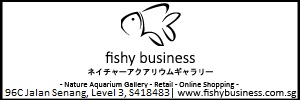I've kept these fishes in my tanks for the past few years, even had a dedicated small breeding tank of them for a while (they laid eggs but sadly the fry either got eaten or didn't get sufficient food sources to survive for long).
Anyways, some inputs from my experience keeping them:
Based on the ones i've kept, they only eat live foods... small critters like nematodes, baby brine shrimp, daphnia moina, microfex, small tubifex, detritus worms, ostracods, small seed shrimps etc. I've not seen them eat commercial fish food so far.
The best environment to sustain them is in a mature cycled tank with ample colonies of tiny critters, usually most planted tanks will have such healthy micro-fauna.
Though if you treat and quarantine your plants well to ensure that zero critters hitchhike in (like me), then the tank will be devoid of critters/pests and there may be a lack of natural live food sources for them. In such case, you will need to maintain or buy live food for them. I keep various tubifex, microfex and daphnia moina cultures. In addition, i also hatch baby brine shrimp to feed to them too.
They don't really need dense plants or lots of hardscape in their tank, but dim lighting and plants with hiding places can help make them more comfortable and less stressed. If you are keen to breed them, then hollow wood pieces or ceramic tubes are useful, as they usually lay their eggs in those places.
If you find them hiding in corners in your tank, then maybe look at getting a few small ceramic tubes to place around the tank, they will automatically swim inside the tubes to rest or hide if they need to.
They are peaceful with the majority of fishes and shrimps, just make sure not to keep them with aggressive fishes that may nip or eat them (due to their small sizes). Your tetras and plecos should be okay, but do observe that the betta doesn't chase or pick on them too much.
On the flip-side, they may snack on newborn shrimplets though. Although i have not actually seen mine eat any shrimplets so far, its still a possibility based on how they can hunt and eat other tiny critters.
I've kept mine in various tanks with parameters ranging from pH 5.5 to 7.8, TDS 80-220, Temp 25-30°C, with/without Co2 injection and ferts etc... all okay. But as with all fishes, its still best to acclimate them properly before introduction into a tank environment (especially if your tank parameters are very different from the LFS tanks).
If you can keep the tank conditions stable and clean and there are ample live critters for them to feed on, they can live for a long time. I would consider them quite a hardy fish. The oldest ones i still have in my tanks are close to 3 years old, and they have been shifted across multiple tanks and lived in different parameters without issues.
Happy fishkeeping.











 Reply With Quote
Reply With Quote



Bookmarks